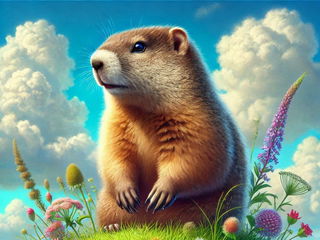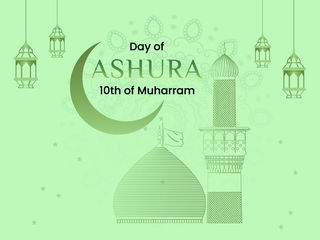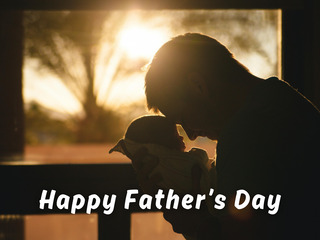- Calendar
- Calendar 2025
- December
- Holiday Christmas Day
Christmas Day
Holiday
Christmas Day in Australia is celebrated on December 25.
In 2024, Christmas Day is on a Wednesday.
Christmas is a religious, cultural, and commercial holiday, a day when most Australians spend time with family and friends, exchanging gifts and sharing meals. It is a public holiday, so most shops and businesses will be closed.
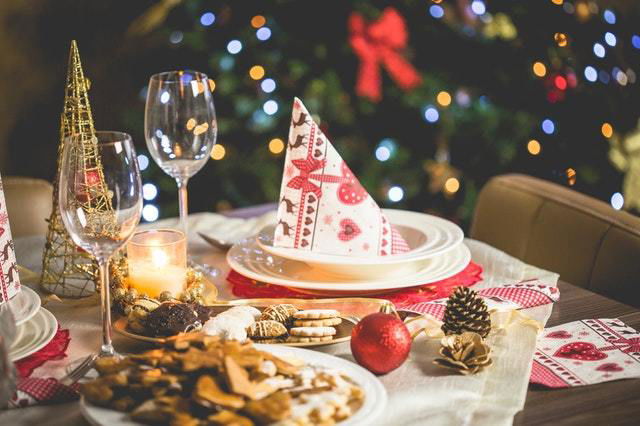
The Origins of Christmas
Christmas as we celebrate it now is a celebration of the birth of Jesus Christ as depicted in The Bible. The story of Jesus tells of how he was born in Bethlehem to Mary and Joseph after their journey from Nazareth. Angels announced His birth to shepherds who visited Him in a stable, and wise men followed a star to present gifts. His birth marked the beginning of Christianity.
The Date
Although we celebrate the birth of Jesus on December 25th, there are ancient celebrations that stretch back further than the earliest recognized celebrations of Christmas.
Historically, many European cultures had midwinter ceremonies around the winter solstice. These were to mark the rebirth of the sun when the days would start to get longer again; the Scandinavians for example had Yule, a ceremony where they would burn a log and feast for as long as it burned.
The Romans followed Saturnalia, a week-long hedonistic feast involving drinking, merrymaking, gift-giving, and decorating homes with evergreens. People threw standards and norms aside: peasants would take over the city, masters would become slaves, men would dress as women, etc. The feast culminated in the birthday of Mithra, the sun god, on December 25. On December 25, 274, the sun god was named the principal patron of the Roman Empire, and a temple was dedicated to him in the Campus Martius.
Emperor Constantine of the Western Roman Empire converted to Christianity in 313 AD and granted legal recognition to the religion. To unite his empire, he merged Christian and pagan festivals. The book The Paganism in Our Christianity states: “It was a definite Christian policy to take over the pagan festivals endeared to the people by tradition, and to give them a Christian significance”.
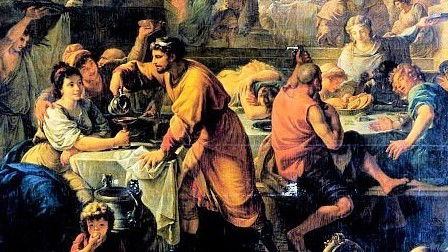
The Roman Church held its first official observance on December 25, 336 AD. This is thought to be the first recorded Christmas celebration.
With the rapid spread of Christianity throughout the Roman Empire, Christmas also spread. By the 8th century, most of Europe celebrated it, although Easter was more important. It began to take on more of the merrymaking features of the northern European festivals. In the Middle Ages, Christians attended church to worship on the day, but other rites were far from holy. For example, the poor would go to the homes of rich people to demand their best food and drink, vandalizing the homes of any who refused.
In the 19th century, portrayals of Christmas in modern literature and religious and immigrant customs gave shape to the popularity of the day for the family. In 1870, it became a federal holiday.
The Tree
The Celts and Druids in Europe saw evergreens as symbols of eternal life and would decorate their homes with them to revive the dying sun of midwinter. They would also burn a Yule log. Mistletoe was sacred and held magical powers. In Scandinavia, if enemies met under mistletoe trees, they would lay down their weapons and give each other a kiss of peace. In medieval Germany, people honored Adam and Eve with a feast on December 24, decorating a paradise tree with apples and wafers. Candles were also used as decorations, symbolizing Christ.
The Christmas tree has a place in culture due to the significant role of Queen Victoria and in particular Prince Albert played in the 19th century. Prince Albert was from Germany and had been brought up with the tradition of having a Christmas tree. He first decorated a tree in Windsor Castle in 1848, as well as gifting Christmas trees to local schools. Images of this sight became famous, and so the popularity of the Christmas tree boomed, becoming popular across the world.
Germany is not the only country to have an influence on Christmas tree culture. The Christmas tree in London is gifted to the city every year by the city of Oslo in Norway. This tradition goes back to 1947 when it was first given as a gift of gratitude and friendship for the British contribution to the war effort in The Second World War.
The Story of Santa Claus
The idea of Santa Claus mostly came from the legend of Saint Nicholas, a fourth-century bishop who helped the poor and sick. In the late 18th century, Dutch immigrants in New York gathered to commemorate his death. Their nickname for him was Sinter Klaas. Over the decades, the character known as Santa Claus began to take shape, with retail, poems, and illustrations contributing to his well-known image and story.
Throughout history and across country borders, the legend of Father Christmas is everywhere, and known by many names:
- Father Christmas/Santa Claus/Kris Kringle/Saint Nic - Across English-speaking countries, his name comes in different forms, but these are the four main ones.
- Père Noël/Pai Natal/Papa Noel/Noel Baba - in many countries including France, Portugal, Spain, and Turkey the name is a direct translation of Father or Daddy Christmas.
- Weihnachtsmann - in Germany the name translates as Christmas Man.
- Ded Moroz - The Russian term for Father Christmas translates as Grandfather Frost. Rather than wearing red, he is often depicted in blue and white, delivering presents with his Granddaughter Snegurochka.

Christmas Traditions
Carols by Candlelight: In the lead-up to Christmas, communities all over Australia hold outdoor “Carols by Candlelight” events. These gatherings feature local and professional musicians singing Christmas carols, with attendees holding candles, often in public parks or open spaces. The event began in 1938 as a way to bring people together, especially those who live alone and are isolated from others. It has become a big part of the Christmas season.
The Christmas Day Dinner: While the rest of the world may enjoy turkey and stuffing, we do things slightly differently in Australia. Yes, you can absolutely find that food at the Christmas table, but it is more likely to be served cold, along with shrimp and meat skewers from the barbie. Side dishes will include salads, oysters, scalloped potatoes, vegetables, and fruit. All of this is followed by desserts such as pavlova, trifle, and Christmas pudding. Some typical seasonal drinks are eggnog, cider, mulled wine, and punch.
Entertainment activities include ballets, old movies on TV, and parties. In many local communities, nativity plays, pageants, concerts, performances, and tree-lighting ceremonies often take place. Towns and churches are decorated with nativity scenes incorporating baby Jesus, Mary, Joseph, animals, shepherds, and angels.
Churches hold Christmas Eve candlelit or midnight services. Carol singers go from house to house. People decorate their homes with lights and displays outside, and light their Christmas trees and other decorations inside. Children especially look forward to receiving gifts on Christmas morning, with Santa Claus coming down the chimney to deliver them the night before. Some people volunteer to help out at homeless shelters or engage in other charitable work.
Yule Love these Christmas Facts
- Did you know that, as far as we can tell, Jesus was not born in December? The Jewish month of Chislev (November/December) was a time for cold and rainy weather, so shepherds would not have been outside tending their flocks.
- Also, we read that Joseph and Mary traveled to Bethlehem because of a decree by Caesar Augustus, who was particularly hated by the Jews, and so he would not have wanted to stir up even more anger against him by ordering people to travel in winter. By all accounts, Jesus was likely born sometime in spring.
- Nowhere in the Bible does it mention 3 wise men. It states that astrologers, or magi, came from eastern parts, but doesn't say their names or how many there were. We assume three as there were three presents.
- Christmas was once against the law!… Because of its pagan origins and boisterous customs, the Puritan-led government in England banned Christmas in 1644, and again from 1659 to 1681. Offenders were liable to a fine of five shillings. Despite this, some parts of the country continued to observe it.
What day is Christmas
Christmas Day is always on December 25, the day after Christmas Eve. However, what day of the week Christmas falls on changes each year. Below you can see what day Christmas will be on, and the dates of Christmases past:
- Christmas Day 2024 - Wednesday, December 25
- Christmas Day 2025 - Thursday, December 25
- Christmas Day 2026 - Friday, December 25
- Christmas Day 2027 - Saturday, December 25
- Christmas Day 2028 - Monday, December 25
Can’t wait until Christmas? Get into the spirit and share this fun Christmas Countdown with family and friends!

Other Celebrations
-
Jan 01 WedChristmas Holiday
-
Jan 07 Tue
-
Jul 25 FriChristmas In July
-
Dec 24 Wed
-
Dec 26 Fri
-
Dec 26 Fri

Christmas Day - Next years
Friday, 25 December 2026
Saturday, 25 December 2027
Monday, 25 December 2028
2025 Calendars
You might also be interested in




